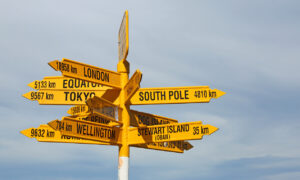According to a recent analysis by Emergent Research, the global anti-reflective coatings market is expected to be valued at USD 6,875.3 Million by 2027. Anti-reflective or anti-glare coatings are in high demand, which can be ascribed to their expanding use in solar panels, eyewear, electronics, and automotive. Additionally, as anti-reflective coatings considerably improve the readability of display screens even in high light environments and at awkward angles, rising investments in the development of medical equipment and instruments are projected to fuel market expansion.
Optically coated surfaces with anti-reflection properties lessen reflections from the optical surface. When applied to both simple imaging systems and complicated systems like telescopes and solar panels, these coatings improve visibility and contrast. Additionally, it effectively raises the lens surface’s transmittance. Eyewear with anti-reflective coatings offers a clear view and is scratch, water, and dust resistant. When using a computer for prolonged periods, anti-reflective eyewear shields your eyes from glare, preventing eye strain and tiredness.
Further key findings from the report suggest
- The market for anti-reflective coatings is anticipated to expand as a result of rising demand for these materials in the production of high transmittance lenses and glasses. Anti-reflective coatings are experiencing rapid market expansion due to the expanding eyewear market.
- Better image clarity, 97.0% light transmission, excellent glare reduction, scratch-resistant coating, and lightweight properties make acrylic resins a better optical display screen filter.
- This is due to an increase in the geriatric population and vision problems, which are driving up demand for eyewear products. Thus, increasing eyewear demand is anticipated to fuel the market expansion of anti-reflective coatings.
- Solar photovoltaic cells’ anti-reflective coating helps to increase the amount of light that is absorbed by the cell. The anti-reflective coating is necessary because naked silicon solar cells reflect more than 30% of light.
- Key participants include Carl Zeiss, Hoya Corporation, Royal DSM, Essilor International SA, PPG Industries, Optical Coatings Japan, Honeywell International Inc., DuPont, iCoat Company LLC, and Rodenstock GmbH, among others.
Emergen Research has segmented the global anti-reflective coatings market based on resin type, technology, application, and region:
Resin Type Outlook (Revenue, USD Billion; 2017-2027)
- Acrylic
- Urethane
- Epoxy
- Others
Technology Outlook (Revenue, USD Billion; 2017-2027)
- Electron Beam
- Sputtering
- Others
Application Outlook (Revenue, USD Billion; 2017-2027)
- Eyewear
- Electronic
- Solar Panels
- Automotive
- Others
Regional Outlook (Revenue, USD Billion; 2017-2027)
- North America
- S.
- Canada
- Mexico
- Europe
- Germany
- the UK
- France
- BENELUX
- Rest of Europe
- the Asia Pacific
- China
- Japan
- South Korea
- Rest of APAC
- Latin America
- Brazil
- Rest of LATAM
- MEA
- Saudi Arabia
- UAE
- Rest of MEA
To get leading market solutions, visit the Link


































